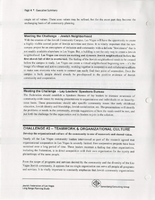Search the Special Collections and Archives Portal
Search Results
Fraley Family Collection of Las Vegas, Nevada Films and Photographs
Identifier
Abstract
The Fraley Family Collection of Las Vegas, Nevada Films and Photographs (1956-1995) include 8mm photographic films of the Helldorado Parade and Hoover (Boulder) Dam in 1956, color photographic prints of the construction of the Fremont Street Experience in 1995, and one color photographic print of the Tower Casino at the State Line in 1976. The 8mm film footage was taken during a family vacation and also includes exterior shots of casinos on the Las Vegas Strip.
Archival Collection
Lincoln County Archaeological Initiative Collection
Identifier
Abstract
The Lincoln County Archaeological Initiative Collection (2016-2019) contains digital files of oral histories collected as part of A Ranching and Farming Context for Lincoln County, Nevada, ca. 1857 to 1934 (Oliver et al. 2018). The collection consists of thirteen digital oral history recordings and corresponding transcripts, as well as a final report of phase one of the project. The entire collection is digital files.
Archival Collection
University of Nevada, Las Vegas University Parking and Traffic Control Committee Records
Identifier
Abstract
The University of Nevada, Las Vegas (UNLV) University Parking and Traffic Control Committee Records (1969-1992) contain meeting minutes, correspondence, reports, parking regulations, and newsletters. The UNLV Parking and Traffic Control Committee reviewed various policies and regulations for UNLV parking facilities and made recommendations for parking lot and traffic flow changes, as well as parking fines and permit fees.
Archival Collection
Frances Intravia Photograph Collection
Identifier
Abstract
The Frances Intravia Photograph Collection (approximately 1948 to 1979) contains three black-and-white photographic prints. The images depict Albert and Arabell Lee Hafner, author of 100 Years on the Muddy, visiting the St. Thomas, Nevada townsite after the Lake Mead water levels dropped enough make it visible. One of the prints is an original from approximately 1948 to 1952, and the other two are reproductions of images taken during the same period.
Archival Collection
Victor J. Zerga oral history interview
Identifier
Abstract
Oral history interview with Victor J. Zerga conducted by David Jukich on April 03, 1976 for the Ralph Roske Oral History Project on Early Las Vegas. Zerga gives insight into the field of nursing and discusses the role that ranching had in Las Vegas, Nevada.
Archival Collection
Monty Brandt Photograph Collection
Identifier
Abstract
The Monty Brandt Photograph Collection consists of black-and-white photographic prints of the White Cross Drug Store on Fremont Street in Las Vegas, Nevada from 1924 and 1955. Images include views of Fremont Street, as well as interior and exterior views of the White Cross Drug Store.
Archival Collection
Marcus Mason oral history interview
Identifier
Abstract
Oral history interview with Marcus Mason conducted by Leon Green on February 04, 2013 for the African Americans in Las Vegas: a Collaborative Oral History Project. Mason talks about his childhood in Las Vegas, Nevada, his parents’ past occupations, and how his religious upbringing influenced his career choices as an adult.
Archival Collection

Transcript of interview with Helen Naugle by Irene Rostine, October 31, 1996
Date
Archival Collection
Description
Prior to 1962, Helen Naugle had only visited Las Vegas once in her life while traveling from Idaho to California for a vacation with her husband and her boss. The group made a quick stop so her boss could interview for a position with EG&G and, as fate would have it, EG&G did not hire Helen’s boss. However, they did extend a job offer to Helen’s husband. A month later, Helen, her two daughters, and her husband became residents of Las Vegas, Nevada. Before moving to Nevada, Helen enjoyed singing in super clubs and performing on her radio show, “Melodies from Meadowland” and working for American Machine and Foundry. Upon her arrival in Las Vegas, Helen went to work for Bonanza Airlines before attending real estate school. In 1963, Helen opened her first office, Bruce Realty, and in 1965, she obtained her Broker’s license. She spent the next ten years selling general real estate. During this period, Helen was an active member of the Board of Realtors, as well as an early participant in the Board’s newly formed Women’s Council. Fate would strike again in Helen’s life while she was visiting her daughter at college in Arizona where she read an article in the Phoenix newspaper about a group of brokers who had formed a networking association to sell hotels and motels across the country. As a result of her initial contact with this association, Helen spent the next four decades selling hotels and motels throughout the State of Nevada, including Las Vegas, Elko, Tonopah, and Wells. She eventually became the first woman President of the American National Hotel-Motel Association. The cultural diversity of hotel and motel buyers would provide Helen with opportunities to travel the world and work with buyers from many different countries and cultural backgrounds. It also led to Helen’s membership in the FIABCI (International Real Estate Federation) and her Certified International Property Specialist and Federation of International Property Consultants certifications. Helen was also selected by the Association to represent the Air Force as “Innkeeper Evaluator” for one year. This honor took her to five Air Force bases in the United States and to Clark Air Force Base in the Philippines. During Helen’s career in hotel and motel real estate sales, she witnessed the transition from “mom-and-pop” American buyers to the influx of international buyers predominately from East India and Asia. The opportunities for helping repeat buyers and sellers gradually went away, as foreign buyers entered the market and tended to resell their properties to friends and family members from their own countries. During the latter part of her career, Helen found time to give back to the Las Vegas community through her volunteer work helping to establish the Scleroderma Foundation of Nevada. She also served on the Board of Directors of the Downtown Las Vegas Partnership where she focused on public safety in the area encompassing the Fremont Street Experience. Her work with both of these organizations allowed her to draw on her career experience for the benefit of others. Whether it was fate, or as Helen put it, she “just lucked into a lot of things,” one thing is certain - Helen Naugle was certainly a trail blazer for women in the hotel-motel niche of the real estate business, not only in Nevada, but across the nation.
Text

Transcript of interview with Arby Hambric by Claytee D. White, September 23, 2015
Date
Archival Collection
Description
Arby L. Hambric's book entitled, "To Thee I See: From picking in the fields of Texas to cooking for dignitaries on U.S. Navy ships, a journey I wouldn't change," describes his profound journey from working in the cotton fields as a child to being drafted into the U.S. Navy, before completing high school. During this interview, he recalls the significant achievements of the "Red Tails" and the Tuskegee Airmen. Beginning his 20 year Navy career before military integration, Arby describes the racial tensions that plagued the U.S. Navy in the 1940s, and discusses how he was able to successfully navigate that racist environment for two decades and three war eras. Arby enrolled in San Diego State College after leaving the U.S. Navy. He also worked as maintenance personnel for Sears and Roebuck and started a catering business with his wife. He became a member of the Southern Nevada Enterprise Community, SNEC Board upon moving to Las Vegas, Nevada, after his wife died. With a family legacy he can be proud of, Arby highlights the achievements of his great grandson Taquan Mizzell, a Virginia Cavaliers running back at the University of Virginia. As a Navy veteran, Arby often volunteered his time and resources to help others in need. He recalls driving the sick and elderly back and forth from the Westside community to Valley Hospital or University Medical Center, UMC. He also discusses government enforced road closures and a wall that was built to block Blacks from entering the new downtown. This interview sheds new light on military integration and offers key strategies for overcoming environmental racism. Arby mentions a documentary about the closing of the wall and offers his predictions on the future of the Westside.
Text

Jewish Federation of Las Vegas long-range planning study, 2000
Date
Archival Collection
Description
Long-range planning study conducted and prepared by the Levenberg Consulting Group regarding the Jewish community of Las Vegas with particular attention to Jewish elderly, the economically disadvantaged, young adults, and Jewish education at all ages.
Text
